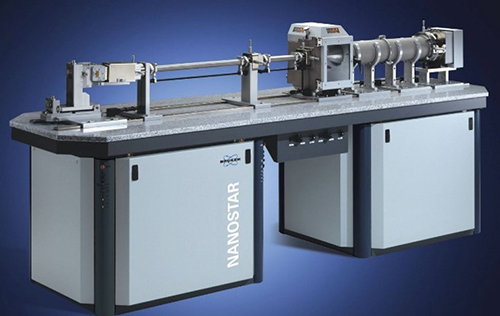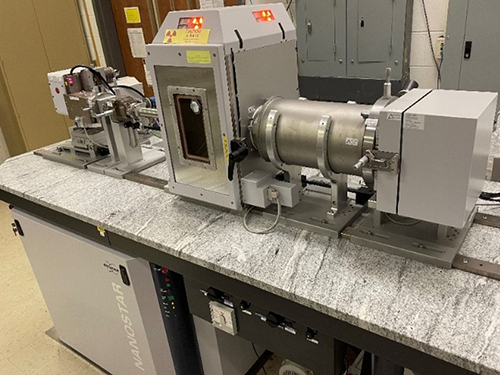

Available Methods and Accessories
The NanoStar is equipped with a 6kW TXS Copper rotating anode, which supplies an extremely intense X-ray beam, Göbel mirrors, two pinhole collimators, an evacuated beam path and a Vantec-2000 2D detector.
It has available an Image plate to perform simultaneous WAXS scans and a temperature stage (-20 °C to 110 °C). Additionally, GI-SAXS, tensile, and shear stages are available for experiments.
Sample Requirements
- Liquids and gel: ~200 µL
- Powders: ~ 100 mg
- Films: ~20 x 20 mm with thickness > 30 µm
Summary of Technique
The instrument works by sending an X-ray beam to a sample of interest. As the X-ray hits the sample, the beam diffracts and scatters into different angles. This scatter pattern can reveal information on the nanostructure of the sample. SAXS is a crucial characterization tool for proteins, polymers, liquid crystals, colloids, surfactants, porous media, nanoparticles, and nanocomposites.
Information Provided & Detection Limits
This instrument allows the study of the shape and size distribution of nanoscopic structures with characteristic lengths between 3 – 50 nm. It also provides information on aggregation behavior, polydispersity, interparticle interactions, and surface (interfacial) area of a system.
Detection limits. For liquids, the detection limit is usually >1% in the absence of heavy atoms or >0.1% with heavy atoms.
.
Lab Location and Contact Information
Location: IMS X-ray Laboratory
Lab Manager: Daniela Morales
daniela.morales@uconn.edu
860-486-1824